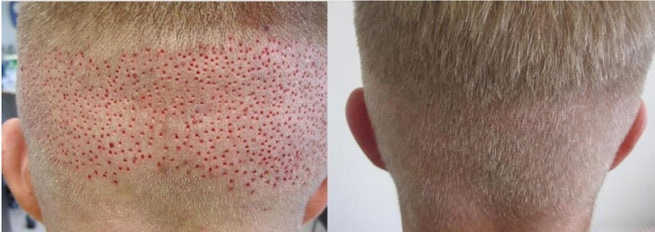Table Of Content

FUE hair transplants restore hair by replacing these old follicles with new follicles that are still able to grow hair. A surgery that costs a small fortune in the West goes for a bargain price in Istanbul. You send your photos, they plan your operation, and you book a flight.
2023 Top 10 Best Hair Transplant Clinics in Turkey (Cost and Reviews) - The Hindu
2023 Top 10 Best Hair Transplant Clinics in Turkey (Cost and Reviews).
Posted: Wed, 22 Mar 2023 07:00:00 GMT [source]
Guide to FUE Hair Transplant: Benefits, Process & Recovery
Ziering Medical utilizes the SAFE System designed by Dr. Jim Harris for manual FUE surgery procedures. It is a blunt, motorized dissection device that allows surgeons to isolate follicular units from the donor area so they can be extracted directly, all while minimizing damage to the follicles. After your FUE hair transplant, it's important to maintain a proper hair care routine to ensure the longevity of your results. This includes regular shampooing and conditioning and avoiding harsh hair products or excessive heat styling. Your surgeon will provide guidance on the best practices for caring for your transplanted hair. In the days following your FUE hair transplant, you can expect some redness, swelling, and scab formation in the donor and recipient areas.
The FUE procedure
Follicular unit extraction (FUE) is a hair transplant surgery method utilizing a rotating punch instrument. The sharp edges of the tool go under the skin, turn manually or with motor assistance, and extract each hair follicle one by one. FUE hair transplant can lead to a boost in confidence and self-esteem. As your hair gradually regrows, you'll likely experience an improvement in your overall appearance and self-image.
One Generations Trash – Another Generations Treasure: Clinical Perspective of The Use of Exosomes In Hair Loss
Ex-Chicago Bear Brian Urlacher sues Texas hair restoration company for $50K over blog post - Chicago Tribune
Ex-Chicago Bear Brian Urlacher sues Texas hair restoration company for $50K over blog post.
Posted: Tue, 10 Jan 2023 08:00:00 GMT [source]
PRP is a highly concentrated solution derived from your own blood, rich in growth factors and proteins that promote hair growth and healing. Following these instructions will help minimize potential complications and ensure your hair transplant procedure is as successful as possible. If you have questions or apprehensions about the preparation process, rest assured that our team will be readily available to address all your concerns, ensuring your total comfort leading up to the procedure. Robotic FUE represents a state-of-the-art technology designed to automate the hair transplant process, reducing the potential for human error and delivering consistently reliable results. Our robotic FUE hair transplantation system, powered by a high-definition stereoscopic vision system, meticulously examines each hair at a remarkable frequency of sixty times per second.

Follicular Unit Extraction generally offers a quicker patient recovery time and significantly lower post-operative discomfort than follicular unit transplantation. The choice between follicular unit transplantation (FUT), follicular unit excision (FUE), and a fake hair transplant is personal. Each method has pros and cons, so it’s crucial you do your research to decide what’s best for you. However, clinics are beginning to offer cryopreservation of hair follicles. Cryopreservation means that your hair follicles are extracted and frozen for use later on in your life. This costs an average of £2,000 plus an annual fee of £100 for 100 hair follicles in the UK.
FUE Hair Transplant: Benefits, Cost, and Procedure Explained
Several hair transplant techniques are available to surgeons at the clinic, including DHI hair transplant and FUE hair transplant. DHI is direct hair removal, while FUE stands for follicular unit extraction. Devices like these help a hair transplant surgeon achieve a higher degree of precision, but experienced hands are still irreplaceable. A typical procedure involves extracting hair follicles from the donor area and planting them in microscopically small incisions, one by one. The Sapphire FUE hair transplantation method uses a sapphire blade that is sharper and more precise than the standard steel blade used during the standard FUE hair transplant procedure.
Doctors often suggest that patients focus on healthy living in the weeks leading up to surgery, meaning a clean diet and limited alcohol consumption. This is the no-nonsense, real-time guide you’ve been looking for that reveals the actual month-to-month experience after FUE surgery, including all the ups and downs along the way. If you’re serious about FUE and want all the relevant recovery info, you’re in the right place.
Perhaps the most shocking aspect of FUE recovery is the realization that sometimes “it gets worse” before it gets better. However, these short-term changes are only skin deep, and as our timeline shows, the eventual results are well worth the months spent healing and waiting. In fact, it’s a good sign that your hair is “resetting” and ready to begin a growth phase during which you’ll reap the long-awaited benefits of your procedure. There’s not much else you have to do in terms of active recovery — this is when the waiting game really begins. Some clinics may offer certain medications or treatments in the period leading up to surgery, whether to boost immunity or aid in the body’s natural healing capabilities.
Due to its reduced impact, the healing process after an FUE transplant is faster and more comfortable for patients. They will have less downtime compared to MDEE and can even return to work within a week. Some may take more time off in order for the side effects to diminish, but overall downtime or discomfort is minimal. With FUSS, the surgeon removes a 6- to 10-inch strip of skin from the back of your head. You can also see just how big of a role the lead surgeon and clinic support teams play in this experience from beginning to end. When seeking out FUE or any other cosmetic procedure, it’s always worth a bit of extra time and money to get the best available service.
The objective here is to clarify all aspects of the surgery, from time and place to payment, follow-up meetings, and more. Top surgeons pride themselves on transparency and often anticipate the needs of clients by preemptively answering the most important questions. However, we want to achieve full transparency with clients no matter which procedure they pursue, which means being open and honest about expectations during recovery from FUE. Follicular Unit Transplantation (FUT) takes an entire piece of the skin from the donor area and moves it to a new area. Follicular Unit Extraction (FUE) takes each follicle individually from the donor area and moves it to the desired area.
Again, some surgeons prefer to harvest the grafts first, and then make recipient sites with the harvested number of grafts. For example, if the crown is the area the patient wants to transplant, but the surgeon performs a transplant only in the hairline, then that would not be a good situation. Any surgical procedure can fail or go awry for a variety of reasons. That’s why it’s so important that you choose the best hair transplant surgeon possible AND that you follow pre-op and post-procedure instructions your physician provides.
Some of the greatest risks involve overharvesting the donor area or harvesting too wide an area outside of the SDA(safe donor area). It is especially important that you take great care of your scalp and rest accordingly in the weeks after your transplant. Your hair is in a vulnerable state and you can cause damage to your hair during this period of time. Some doctors believe that you should continue to use minoxidil after a hair transplant in order to improve the results, while other doctors believe that it is not necessary. The reality is that cutting the hair has no effect on the follicles that are underneath the scalp.
This procedure is considered a safe and relatively quick hair transplant method. Hair transplants implant hair follicles in balding areas of the head to tackle hair loss. With natural hair transplants, hair is taken from a healthy area of the scalp and transplanted. Fake hair transplants implant synthetic hair into the balding area. This method allows for a more precise and controlled extraction compared to Follicular Unit Transplantation (FUT) or strip harvesting, which involves removing a strip of scalp tissue containing hair follicles. The FUE method offers natural-looking results with minimal scarring, making it a popular choice for men and women seeking hair restoration.

No comments:
Post a Comment